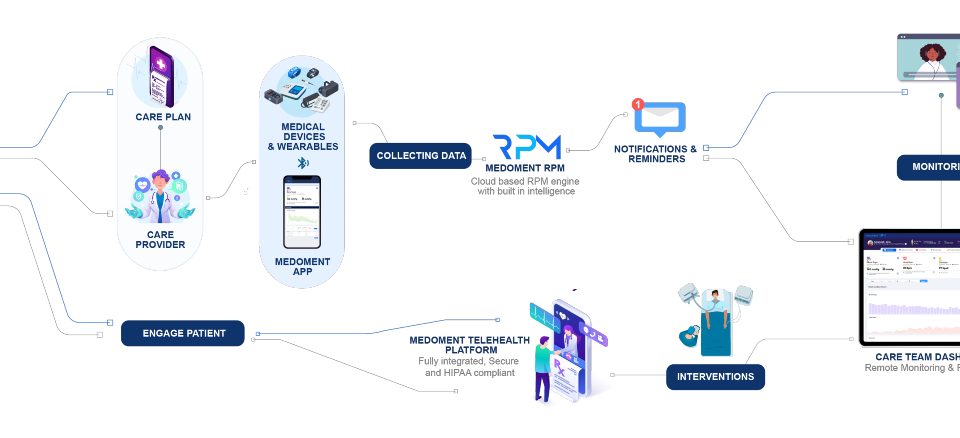
Is Telemedicine The Future Of Healthcare?
January 17, 2022
Is Telemedicine as Effective as Conventional Healthcare?
April 11, 2022The telehealth market in the Middle East and North Africa (MENA) region is expanding rapidly.
As in other areas of the world, the COVID-19 pandemic has accelerated the adoption of remote methods of healthcare provision as in-person appointments were limited. Many other factors are contributing to the growth of remote healthcare in the MENA region.
What is driving the growth of telehealth in the MENA region?
Countries in the region have relatively young, tech-savvy populations who are readily embracing digital forms of communication. Digital healthcare transformation, supported by governments and healthcare leaders in the region, was underway in many countries prior to the COVID-19 pandemic. With the digital infrastructure in place and demand increasing, it is expected that virtual healthcare will see continued growth, becoming the ‘new normal.’ Countries which have mandatory health insurance such as the UAE, Saudi Arabia and Oman have seen increased coverage for telemedicine.

Insights from across the MENA region
The telehealth market, including virtual visits, mHealth and remote patient monitoring (RPM), is estimated to grow from $3.86 billion in 2021 to $6.44 billion in 2026 in the Middle East and Africa, a compound annual growth rate (CAGR) of 10.80%. Some countries have significantly higher growth estimates. The UAE telehealth market is estimated to reach $536.5 million by 2025 in the UAE at a CAGR of 28.2% over 2019 figures. Similarly, in Saudi Arabia, the market is likely to reach $415.4 million registering growth at a 24.2% CAGR.

Telehealth growth in North Africa
North African countries have seen a rapid increase in remote digital healthcare over recent years, which is facilitating improved access to health services. However, there are challenges in some areas such as doctor shortages and technological barriers.
In Egypt, the Ain Shams University Virtual Hospital provides a telemedicine consultation service to underserved remote areas. It aims to provide equitable healthcare to Egypt and the MENA region in a sustainable model and also trains health professionals via its “Treat & Teach” initiative.
In November 2018, Moroccan government agencies and the Société Marocaine de Télémédecine (SMT) launched a telemedicine project to improve access to health services for rural communities. During the 2020 lockdown, a platform was set up to connect patients and volunteer doctors for free medical advice. There are now many other teleconsultation platforms in Morocco. A telemedicine commission was set up by CNOM to establish guidelines and updated regulations for telemedicine practice.

Telehealth growth in the Middle East
In the Middle East, especially in GCC countries, there has been a rapid, effective and sustained transition to telemedicine.
In Bahrain, the first telemedicine service was licensed by the National Health Regulatory Authority in May 2020 and more have followed since.
In Kuwait, many public and private healthcare institutions have transitioned to telehealth. During the COVID-19 pandemic, a national telemedicine service (CoronaCareKW), staffed by volunteer mental health professionals, was set up to provide online advice and counselling. The Kuwait Surgical Telehealth Network (KSTN) has digitally connected 40 operating theatres across 10 government healthcare facilities for live video surgeries and virtual patient monitoring.
In Qatar, the Hamad Medical Corporation launched their remote healthcare services program in March 2019 providing patients with virtual consultations, medical advice and medication delivery.
In Saudi Arabia, innovation in digital health is a key part of the Kingdom’s strategic 2030 Vision. The Ministry of Health is creating an integrated, digitally enabled healthcare system to expand primary care services, empower healthcare seekers and emphasise prevention.
The United Arab Emirates government continues to support investment in telehealth. Over 50% of UAE hospitals use Internet of Things (IoT) based solutions, with 90% of doctors providing healthcare via smartphones and medical apps. Dubai Health Authority’s (DHA’s) in-house telehealth system, ‘Doctor for Every Citizen’, provided more than 83,000 remote consultations during 2020. This system is also linked to ‘Dawa’ee’, a pharmaceutical delivery network.
In Abu Dhabi, the region’s first centralised database for medical records ‘Malaffi’ is enabling safe and secure real-time exchange of patient information between healthcare providers.

What does the future hold for telehealth in the MENA region?
To strengthen health systems in the MENA region, the World Bank recommends moving towards more flexible modes of healthcare delivery, scaling up telemedicine and home-based care modalities. Telehealth is expected to continue to grow and find new applications such as remote patient monitoring (RPM) and mHealth apps. Further investment in digital infrastructure is required to reach more remote areas.
Telemedicine training should be provided for clinical staff, ideally beginning at medical school. Beyond technology and professional skills, there is a need for improved regulation and systems which ensure safe and secure sharing and storage of patients’ personal health data.
Medoment, a new complete patient engagement portal designed by experts in healthcare informatics, is now available in the MENA region. Medoment seamlessly integrates online consultation booking and management, teleconsultations, secure data sharing and many other features within a single platform.
To find out more, or book a demo, contact us: Teleconsultation Management – Medoment | At Medical Moments
RECENT POSTS
- 7 Benefits of Medoment RPM for Your Practice
- Remote Patient Monitoring for Chronic Disease Management
- Can telemedicine help reduce the impact of cardiovascular diseases?
- Can telemedicine be used during pregnancy?
- Can Telemedicine Improve Diabetes Management?
- How to conduct a physical exam via telemedicine
- How can MEDOMENT Optimise Patient Engagement?
- Can patient engagement portals improve healthcare?
- How to choose the right telemedicine software partner
- How to invest in telemedicine software

